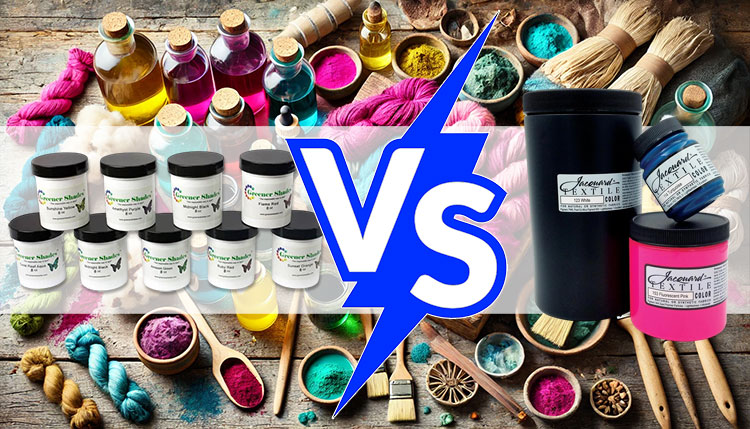-
×
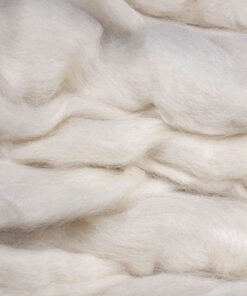 Spinning/felting fiber (Top) - Untreated Blue Faced Leicester
1 × $16.45 CAD
Spinning/felting fiber (Top) - Untreated Blue Faced Leicester
1 × $16.45 CAD -
×
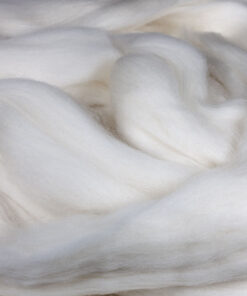 Spinning/felting fiber (Top) - Organic Wool (20.5μ)
1 × $19.35 CAD
Spinning/felting fiber (Top) - Organic Wool (20.5μ)
1 × $19.35 CAD -
×
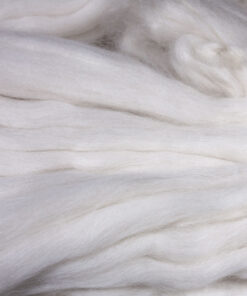 Spinning fiber (Top) - Superwash merino and Cashmere
1 × $33.45 CAD
Spinning fiber (Top) - Superwash merino and Cashmere
1 × $33.45 CAD -
×
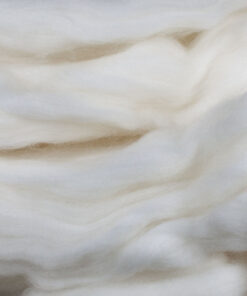 Spinning fiber (Top) - Superwash Merino and Nylon
1 × $24.75 CAD
Spinning fiber (Top) - Superwash Merino and Nylon
1 × $24.75 CAD -
×
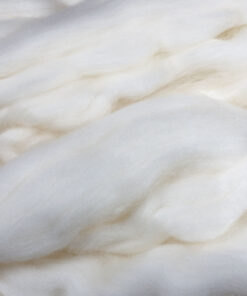 Spinning fiber (Top) - Fine Superwash Merino (19.5μ)
1 × $16.85 CAD
Spinning fiber (Top) - Fine Superwash Merino (19.5μ)
1 × $16.85 CAD
Yarn Dyes
Wool Dyeing: Jacquard or Greener Shades? Which One to Choose?
When diving into wool dyeing, it’s essential to select the right dye for your project and preferences. Two popular brands on the market are Jacquard and Greener Shades. While both are renowned for their performance, they have notable differences that may influence your choice. This article explores the key features of each brand to help you decide on the best solution for your creative needs.
Jacquard: Versatility and Color Depth
Jacquard dyes, especially their acid dye range, are recognized for their exceptional color intensity and lightfastness. Here are some key highlights:
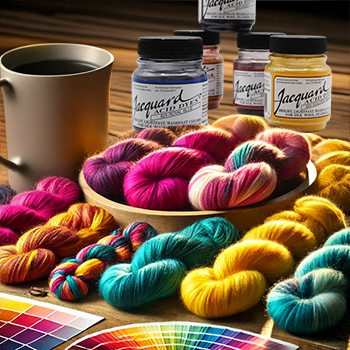 Variety of Colors:
Variety of Colors:
Jacquard offers an extensive palette of 48 shades, ranging from subtle pastels to rich, deep tones. For example, popular hues like “Hot Fuchsia,” “Sun Yellow,” and “Turquoise” are frequently chosen for their vibrant tones and versatility in various textile projects. Their color wheel (available on the product page) also enables precise mixing to create custom shades. This flexibility makes Jacquard an ideal choice for both professional and amateur artisans looking to explore diverse color palettes.- Adaptability to Different Fibers:
Jacquard acid dyes are perfectly suited for animal fibers like wool, silk, and cashmere. They also deliver consistent results with fiber blends, ensuring smooth and vibrant colors across various textile types. - Durability and Resistance:
These dyes are highly resistant to washing and light exposure, making them perfect for projects requiring long-lasting use or extended exposure. Additionally, they allow for the creation of unique pieces that retain their brilliance over time. - Advanced Technical Options:
For artisans seeking complex shades, Jacquard provides precise recipes to craft specific colors through base mixtures. This approach enables experimentation and expands design possibilities for truly unique creations.
However, Jacquard dyes require the use of chemicals that necessitate safety precautions (such as gloves and masks) and thorough rinsing to remove excess dye. This technical complexity could be a challenge for beginners or those seeking simpler solutions.
Greener Shades: An Eco-Friendly Dye
Greener Shades is an excellent choice for those aiming to adopt a more sustainable approach. For instance, this brand is frequently selected by artisans for organic dyeing projects, such as wool blankets for infants or wool garments certified free of toxic substances. These practical applications demonstrate how Greener Shades contributes to environmentally friendly textile production. Here’s why:
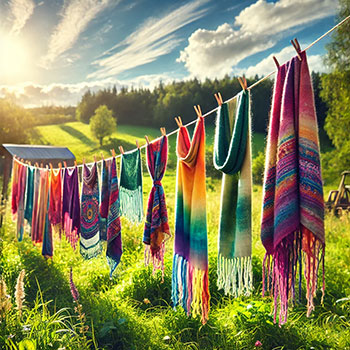
- Eco-Friendly Commitment:
Greener Shades dyes are free of heavy metals, making them safe for the environment. They also meet GOTS (Global Organic Textile Standard) requirements, ensuring compatibility with organic textiles. This ecological commitment allows artisans to create environmentally conscious projects without compromising color quality. - Ease of Use:
These dyes require fewer chemicals to fix the colors, and their dyeing process is simpler, especially for beginners. The use of citric acid or white vinegar is sufficient to ensure proper dye fixation. - Vivid and Bright Colors:
Despite their eco-friendly orientation, Greener Shades delivers vibrant and durable colors comparable to traditional dyes. This makes them a relevant choice for artistic projects while minimizing environmental impact. - Increased Safety:
They are particularly suitable for artisans working in domestic or sensitive environments, such as homes with children or shared spaces, where safety and reduced toxic emissions are priorities. This low toxicity makes Greener Shades highly appealing for home projects or workshops involving families and children.
The primary drawback of Greener Shades is their slightly more limited color range (9 colors) compared to Jacquard (48 colors). However, this limitation can be offset by creative mixing and experimentation. Moreover, Greener Shades offers a comprehensive color guide in PDF format, available here for $8.95, to help users explore all the possibilities offered by their range of dyes.
How to Choose Between the Two?
The choice between Jacquard and Greener Shades depends primarily on your priorities:
- Jacquard is ideal if you’re looking for an extensive palette, intense colors, and optimal durability, though it requires more technical handling. Professional artists or those seeking highly customizable options will find this brand particularly appealing.
- Greener Shades is perfect if you value environmental concerns and prefer an option that’s more accessible for home projects. These dyes are also an excellent choice for individuals wanting to work in a less restrictive and safer setting.
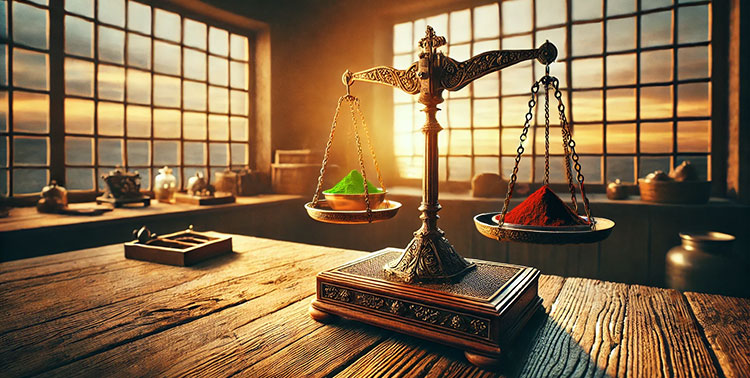
Ultimately, both brands offer exceptional solutions for wool dyeing. Whether you’re an experienced artisan or a beginner, there’s a dye suited to your needs. Consider your creative goals, ecological values, and practical requirements to make the best choice! To help you decide, why not start by trying a small amount of each dye? This will allow you to observe the nuances, ease of use, and final results, and select the one that best fits your projects. Whichever brand you choose, you have the opportunity to create unique works that reflect your artistic vision while respecting your personal priorities.
 English
English Français
Français
